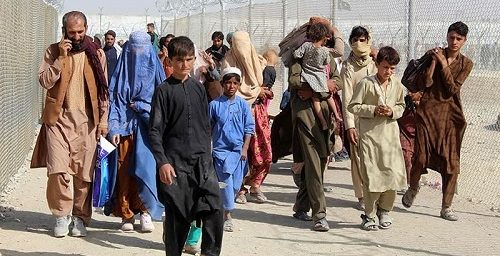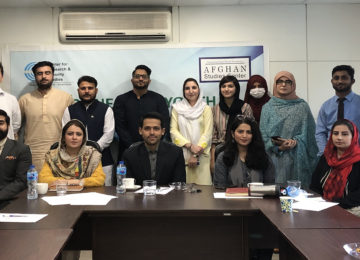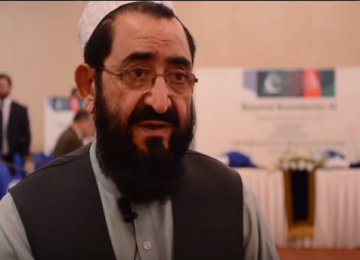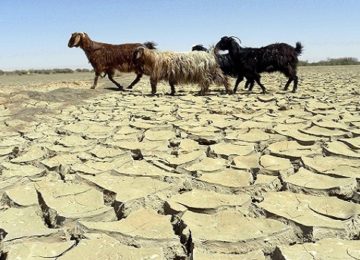Afghanistan is home to more than 70% of the world’s refugee and displaced population. Since the Taliban seized power in August of last year, the Afghan people have endured the worst human rights abuses and continue living in abject poverty, bearing perils for being Afghans.
Between August 15, 2021 (the day the Taliban seized control of Kabul), and June 15, 2022, 2,106 civilian deaths were reported by the United Nations Assistance Mission in Afghanistan (UNAMA). Afghanistan now has 3.4 million internally displaced persons. The Global Peace Index, an annual survey that assesses how hazardous a country is based on 23 parameters including political terror, deaths from internal conflict, and other factors, placed Afghanistan as the most dangerous country in the world for four consecutive years, from 2019 to 2022.
The most vulnerable individuals struggle to locate assistance or access safety. Hazaras continue to be the main targets of horrific ISK assaults and Taliban crimes, and they are frequently subject to forced evictions. Women and girls also live in extreme jeopardy due to the Taliban’s stringent morality measures and hardline approach. Women’s access to political representation, work, healthcare, and education is limited.
The Taliban have targeted female activists with harassment and abuse, arbitrary arrest and detention, forced disappearances, and physical and psychological torture. A minimum of 160 former government and security officers have been executed since the Taliban took power, according to UNAMA, and this treatment has even been meted out to those who were allies of the previous regime.
Migration serves as a core safety net for these populations, but it is becoming harder with increasing cases. Many people under threat can not migrate due to a lack of safe, authorized, and accessible routes. According to data gathered by the Mixed Migration Centre, obtaining a visa for authorized few nearby countries is difficult and expensive for Afghans. The Taliban currently maintain the Population Registry database, which presents further difficulties for former officials and security forces who are stuck in the country.
“How can I cross the border, even if I get a Pakistan visa?”, said a 47-year-old Afghan man, who was questioned by the Mixed Migration Centre. “God alone knows what will happen to me when they put my passport in the border machine and my biometric information pops up revealing that I was a military member in the previous government.”
As a result, many people wishing to emigrate frequently choose—or have no other choice but to use—illegal and unauthorized migration routes. However, these routes are unreachable for many because of the rising expense of smuggling services, which is a direct result of increased demand.
Even those who have been able to leave Afghanistan find themselves in a similar state of “involuntary immobility” in the country’s neighboring countries of Iran and Pakistan. Due to the closure of the majority of Western embassies in Kabul last year, Afghans who have the financial means to do so have gone overseas to pursue their cases with foreign embassies.
Through a unique, streamlined method for Afghan refugees, more than 14,000 people have traveled from Pakistan to Germany. Assisting Afghans who want to immigrate is the High Commission of Canada in Islamabad, which processes their visa applications. But there are many concerns because hundreds of thousands of people have been waiting for visa developments for months. 94 percent of applicants in Pakistan for special immigrant visas to the United States lately mentioned having difficulty finding work.
Many Afghans awaiting visas or seeking refuge are caught in a precarious legal situation, liable to state action due to overstaying or not having a visa, unable to move forward, and unwilling to return due to fear of being killed. Numerous Afghans in danger have been forcibly sent back to their country, and others have been subjected to xenophobic violence, exploitation, and homelessness.
According to a UN assessment, Afghanistan is home to more than 70% of the world’s refugees and displaced persons. Countries such as Pakistan and Iran have been reported for ill-treatment of Afghan refugees, but let us be realistic – what about those countries that waged the war in Afghanistan for 20 years and promised the ill-fated Afghan youth a bright and democratic future? How refugee-friendly are they? Are they as expedient in dealing with the visas as the urgency of the matter suggests? The answer is NO.
Even though it is the most practical and effective form of protection available and the hope of many displaced Afghans, the idea of resettling a sizable number of at-risk Afghans seems remote in the current global situation. There are two options: investing in and promoting Afghan integration in the region, particularly in Pakistan and Iran, and establishing so-called “complementary paths” for Afghans to travel to Western countries via programs for work and educational mobility. Both seem unlikely right now.
By Elsa Imdad
The article was originally published in Matrix Magazine on November 11, 2022








